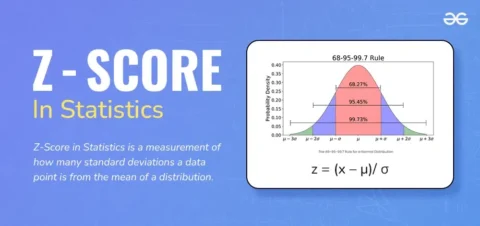Addition and Subtraction of Fractions: A Surprisingly Beautiful Story of Pizza, Patience, and Precision
Let’s be honest—when most of us hear the words fractions, our brains do this weird panic dance. Flashbacks to chalkboards, common denominators, and crumpled worksheets hit hard.
But what if I told you that addition and subtraction of fractions isn’t just a math skill—it’s a story? A story of sharing, balance, fairness, and yes, a bit of patience.
I’ve taught, tutored, and even cried (a little) over fractions. But I’ve also seen them unlock moments of pure clarity. That’s why I’m here—not just to teach you how to add or subtract them, but to help you see the beauty behind the method.
🍕 Chapter 1: It All Starts with Pizza (Seriously)
Let’s kick off with a classic. You have one pizza. You cut it into 4 slices. You eat one.
You’ve just done math.
That slice you ate? 1/4.
The slices left? 3/4.
Now your friend shows up with half a pizza. You both decide to pool your slices together. But here’s the catch—her pizza is sliced into 2 parts, not 4.
So what do you do?
You find a common denominator. (More on that soon.)
Suddenly, adding those fractions becomes not just about numbers—but about people, about fairness, about food. That’s your first clue: fractions are life.
📏 Chapter 2: What Is a Fraction, Really?
At its core, a fraction is just a way to represent a part of a whole.
Numerator = the number on top = how many parts you have
Denominator = the number on bottom = how many parts the whole is split into
So 3/5 means: “I have 3 parts out of 5 equal parts.”
Fractions aren’t scary. They’re just ratios wearing a disguise.
🎯 Chapter 3: When Do We Add Fractions?
Everywhere.
Combining recipes
Splitting bills
Measuring for DIY projects
Comparing distances
I once helped my niece build a bookshelf, and we had to cut pieces of wood that were 3/4 ft and 1/2 ft. That moment? We had to add fractions. If we messed it up, her toy unicorns would have a wonky house.
So yes—it matters.
⚖️ Chapter 4: The Golden Rule – Common Denominators
You wouldn’t try to mix cups with tablespoons without converting, right? Same idea.
When adding or subtracting fractions, you need them speaking the same language—aka, the same denominator.
Here’s the game plan:
Find the Least Common Denominator (LCD)
Convert each fraction to have that denominator
Add or subtract the numerators only
Simplify if needed
Example:
What’s 1/3 + 1/4?
LCD of 3 and 4 is 12
Convert: 1/3 = 4/12, 1/4 = 3/12
Add: 4/12 + 3/12 = 7/12
That’s it. Clean. Logical. Beautiful.
🧠 Chapter 5: Why This Trips People Up
Here’s where frustration kicks in:
Denominators don’t match
Improper fractions appear (like 7/4)
You forget to simplify
My trick? Visualize it.
I use fraction tiles, pie charts, or even cut paper plates into pieces. There’s something magical about seeing it. The abstract becomes real. And that’s when the “aha!” moment lands.
Also, don’t underestimate how much confidence plays a role. I’ve seen kids freeze—not because they don’t know the steps, but because they’ve convinced themselves math hates them. (Spoiler: it doesn’t.)
🧮 Chapter 6: Subtraction—Now Things Get Juicy
Subtraction is just addition in reverse—but there’s nuance.
Let’s say you have 5/6 of a chocolate bar and eat 1/3. How much is left?
LCD of 6 and 3 is 6
Convert: 1/3 = 2/6
Subtract: 5/6 – 2/6 = 3/6 = 1/2
Aha! Fractions aren’t about losing or taking away—they’re about understanding what remains. And that’s an underrated life skill.
Want another juicy challenge? Try:
7/8 – 3/4
LCD is 8
Convert: 3/4 = 6/8
Subtract: 7/8 – 6/8 = 1/8
Satisfying, right?
🌀 Chapter 7: What About Mixed Numbers?
Now we’re mixing whole numbers with fractions. Like 2 1/3 or 5 3/8.
To add or subtract these:
Convert mixed numbers to improper fractions
Find common denominators
Add/subtract
Convert back to mixed numbers (if needed)
Let’s try:
2 1/2 + 3 1/3
Convert: 2 1/2 = 5/2, 3 1/3 = 10/3
LCD = 6
Convert: 5/2 = 15/6, 10/3 = 20/6
Add: 15/6 + 20/6 = 35/6
Mixed number: 5 5/6
Yes, it takes more steps—but also? More satisfaction.
🎒 Chapter 8: Common Mistakes & How to Dodge Them
Mistake #1: Adding denominators
Wrong: 1/2 + 1/3 = 2/5
Fix: Only add numerators after matching denominators.
Mistake #2: Forgetting to simplify
Example: 4/8 should become 1/2
Fix: Always check if numerator and denominator have common factors.
Mistake #3: Mixing up which number goes on top
Rule: Numerator is always the counted part
🌱 Chapter 9: Real-Life Practice Makes Permanent
Want to master this? Try:
Cooking: Double or halve recipes
Crafts: Measure paper, fabric, ribbon
Budgeting: Split bills, compare discounts
Use life as your worksheet.
💡 Chapter 10: Teaching Tips That Actually Work
As someone who’s taught this for years, here’s what really clicks:
Use manipulatives (fraction circles, LEGO bricks, kitchen tools)
Draw everything (bar models, number lines)
Ask WHY, not just HOW (deepen understanding)
Celebrate mistakes (they’re part of the process)
And most importantly? Stay curious. If your student gets it wrong, ask what they were thinking—not why they failed.
💬 Chapter 11: FAQs (Because Yes, You’re Not Alone)
What if the denominators are already the same?
Lucky you! Just add or subtract the numerators.
Can I just memorize the rules?
You can—but you’ll understand better if you visualize and practice.
Why do I have to simplify?
Because math loves elegance. And so do test graders.
🧘♀️ Chapter 12: Fraction Zen Mode
I once had a student who struggled with fractions for years. One day, I brought out slices of bread, a ruler, and some string. We played. We built. We laughed.
Guess what? She got it. Not just for a test—but forever.
Fractions, when approached with calm curiosity, stop being scary. They become symbols of sharing, dividing, balancing, and being fair.
🌈 Chapter 13: Final Thoughts—Why This Matters
At the end of the day, adding and subtracting fractions is more than a math skill.
It teaches:
Patience
Perspective
Precision
And the beauty of bringing things together—or taking just enough away
In a world that’s increasingly about instant everything, this is slow learning. Deep learning.
And honestly? That’s the kind that sticks.
So next time you see a worksheet filled with 2/3 + 1/6, don’t sigh.
Smile.
Because you’re holding one of math’s most human lessons in your hands.



